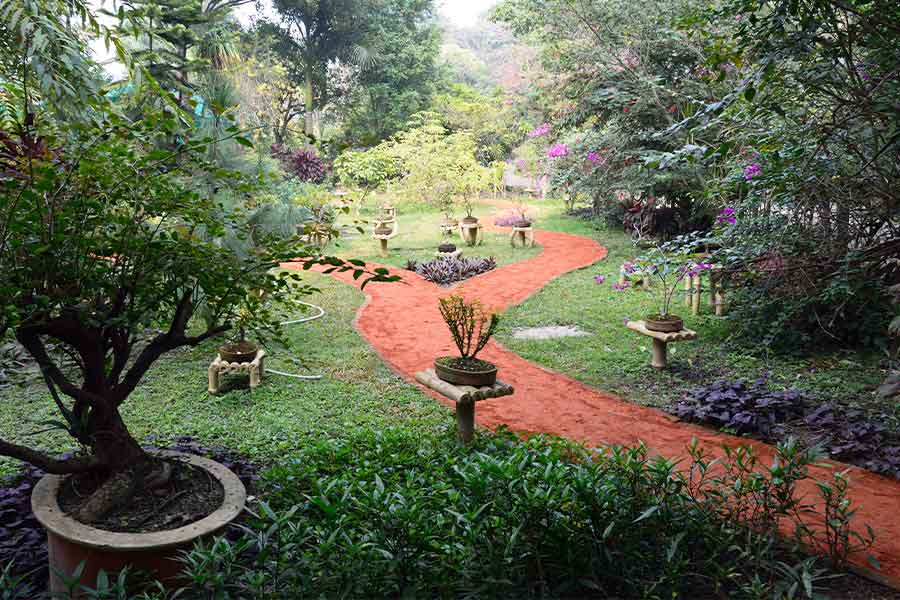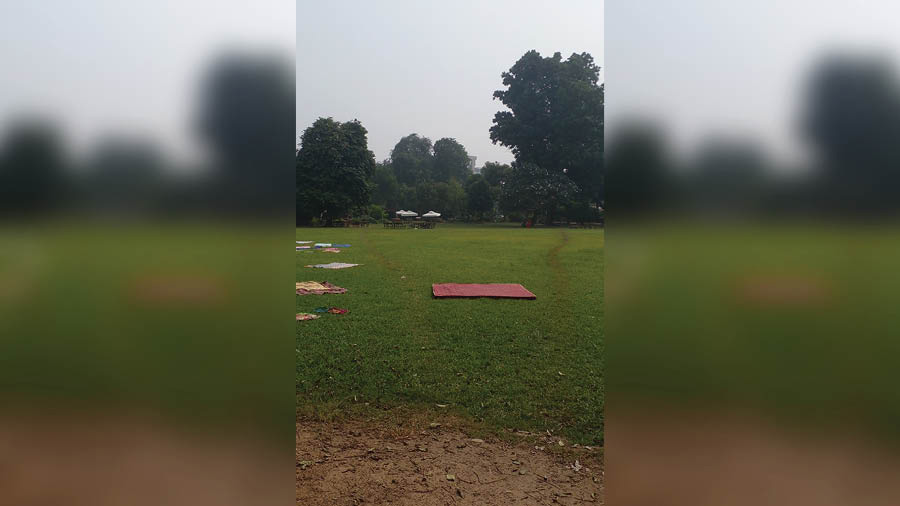One of the largest Calcutta ironies is of a location that transformed dining tables across a fifth of humankind that has now been reduced to an open-air gymnasium.
I speak of the Agri-Horticultural Society of India on Belvedere Road in Alipore.
A top-down argument placed this distinctive institution in context: The India of a little more than 200 years ago was one of the largest ‘countries’ that extended from North-West Frontier Province in the west to Burma in the east. This landmass under British occupation accounted for 3.24 per cent of the global land mass and 20 per cent of the global population.
Agriculture dominated the subcontinent’s gross domestic product; the subcontinent comprised among the highest climate patterns and more than 10 per cent of the world’s biodiversity. Any discussion on global climates in those days (if ever there was one) would start with tropical India at the centre.

Agriculture dominated the subcontinent’s gross domestic product; the subcontinent comprised among the highest climate patterns and more than 10 per cent of the world’s biodiversity Shutterstock
The British recognised that for India to prosper, its agricultural potential would need to be exploited. The widening colonial footprint positioned India at a vantage point: it could draw on agricultural developments across the colonial sweep that could be implanted into Indian soil; it could take crops native to India and transplant them elsewhere. This would serve as an effective transfer of best practices that could create consolidated colonial agriculture wealth.
‘Agricultural wealth’. Now stay with that term. Much of the wealth of those times came from what could be grown. Families moved cities in the pursuit of crop-based arbitrage. Large industries were commissioned using cash crop resources. The largest industries wove cotton, silk or jute fabrics. A tea planter’s position was prized. The hukoomat of the day compelled farmers to grow indigo irrespective of viability. The fingers of Bengal cotton spinners were dismembered to enhance Manchester yarn competitiveness.
In a country where agriculture was 67 per cent of GDP (15% today), the subject was eventually political, economical, and social. So it was not unexpected — in hindsight the East India Company may have been slow to get the drift — that it would conceive of a nodal organisation to unleash the subcontinent’s agri potential: to mentor, to enhance farm productivity, to introduce crop strains, to indigenise global vegetables, to enhance agricultural output, to export and to create enough for downstream processing.
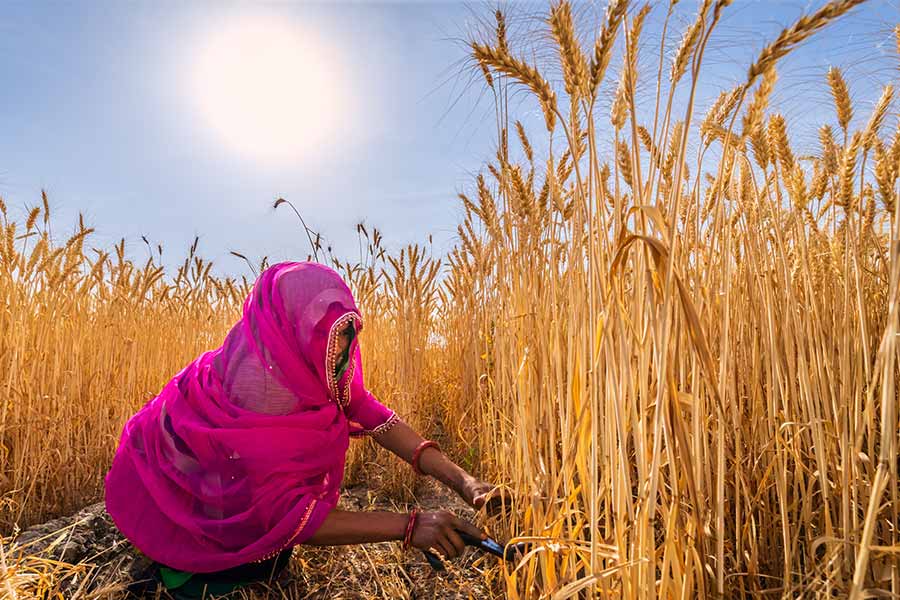
The British recognised that for India to prosper, its agricultural potential would need to be exploited iStock
And so was created Agri-Horticultural Society of India — the effective Ministry of Agriculture of the British government in the 19th century — in 1820. The Society was positioned as the principal organised catalyst of the sub-continent’s agricultural sector; it would be a gateway between domestic producers and global buyers, created just four years following the formation of the Royal Horticultural Society in England by visionary Reverend William Carey (‘The Father of Modern Bengal’ according to Rabindranath Tagore).
Carey served a productive apprenticeship. He reached Bengal in 1793, lived in villages, encountered rural poverty, engaged in cultivation research and arrived at the conclusion that the agricultural ecosystem as it existed would only perpetuate the yoke of the centuries. Carey had two things going for him (from an Indian point of view). He was a botanist and understood agriculture; he was an orientalist and sought to transform for the better. He published an essay on the limitation of sporadic initiatives: he proposed the creation of an agricultural and horticultural society that pursued superior cultivation practices, prudent cropping, timely crop rotation, new plant introductions and wasteland transformations (surprisingly nothing has changed).

Reverend William Carey — a botanist and orientalist who sought to transform for the better Wikimedia Commons
The Carey line that stood out for me: “…the nature of different soils, and the advantages or disadvantages of particular crops, as well as of particular modes of management, would be better understood, the nature and the value of stock and the most obvious means of improving it, be gradually developed, and in short, innumerable improvements in every department would thereby be gradually introduced… an Agricultural Society in India, therefore, which it is the object of this Prospectus to recommend, could not fail of producing the most beneficial results both as it respects the Peasantry, the Land holders, the Europeans who engage in its promotion, and the Country at large: It would tend to enlarge the ideas of the Peasantry, to dissipate the prejudices, to call forth their latent energies, to encourage their industry and to promote their respectability and usefulness in society… indeed there are few who would not realise a continual source of enjoyment in viewing the improvement of this country, the increasing respectability and happiness of its inhabitants, and the advancement of pursuits which are in every country the most friendly to human happiness.”
Seminal. Almost sounds as if someone positioned on a perch was issuing a decree. The result: the Agri-Horticultural Society of India was not merely intended to be a coming together of people; it was intended to take a subcontinent ahead.
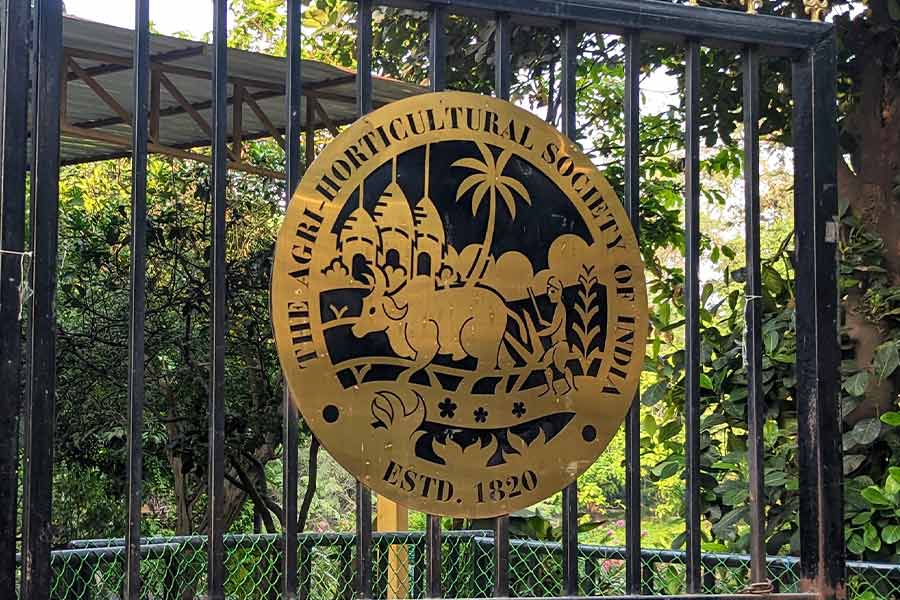
The society was not merely intended to be a coming together of people; it was intended to take a subcontinent ahead Krishnungshu Gangopadhyay
This is what the Society in Alipore did: it facilitated crop introduction, acclimatisation and distribution. It imported vegetable and flower seeds distributed free to growers. Carey sahib helped establish a farm at Akra; the Government supported the Society with the development of cash crop varieties (cotton, sugarcane, tobacco, flax and hemp etc.). The Society’s eight committees focused on each cash crop. Gradually, the cash crop strains improved to become progressively ‘Indian’ enough to be considered equivalent to Covent Garden benchmarks. The successful varieties abounded to a point that the Town Hall exhibition space proved inadequate; the event was shifted to the Eden Gardens and then to the Society’s Alipore premises. The crop handful became a basket: cotton, sugarcane, wheat, barley, flax, hemp, rice, maize, potato, vegetables, fruits, quinine, ginger, tobacco, fodder crops and ornamentals. Crops that we assume to be completely Indian today. Crops that were experimented within the country and provided cheap. Crops that were delivered proximately. Crops that were provided across a range of taste, sizes and colours. The laboratory had transformed into a supermarket.
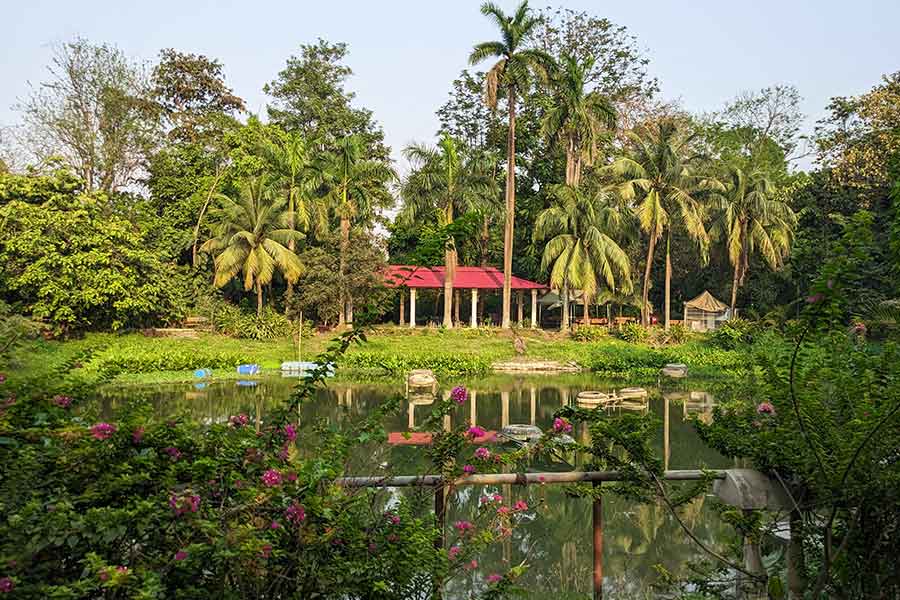
A small waterbody inside the premises Krishnungshu Gangopadhyay
This is how the Society evangelised. In 1830, it imported improved cotton seeds (names like Sea Islands, New Orleans, Seychelles, Bourbon and Upland Georgia) from America. Bourbon and Georgia were raised in the Society’s farm at Akra; imported seeds were distributed to 125 pan-India experimenters. This is what the Society discovered: Upland Georgia did well under Bengal conditions (by production and quality); Mexican cotton seeds did well in Bihar, United Provinces, North Western Provinces and Bengal (samples vetted and verified by Liverpool experts where the stiff British upper lip pronounced: ‘Mighty good old chap. This is better than what we have here in England.’
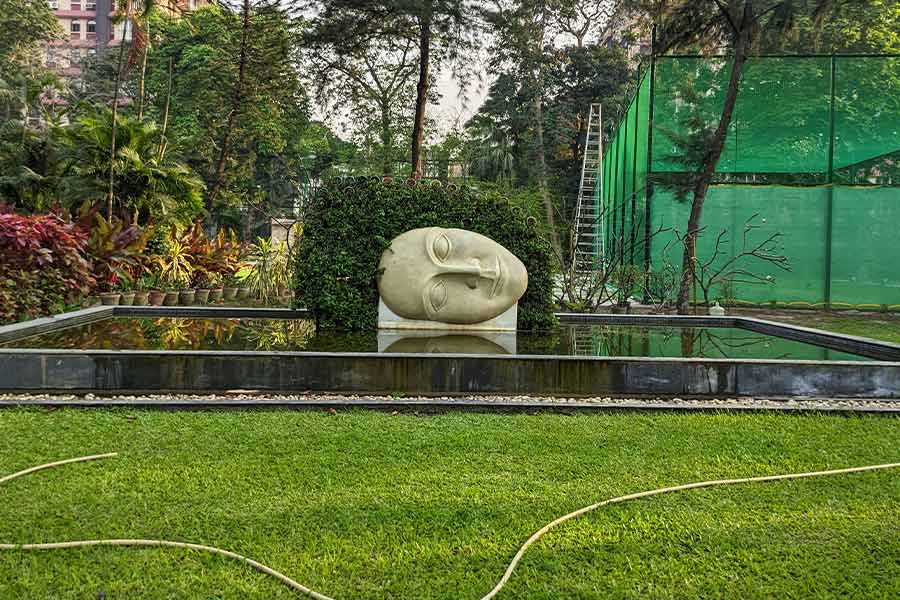
An installation inside the grounds Krishnungshu Gangopadhyay
There is something else that happened. The first Indian who raised cotton from the imported Egyptian seed in 1838 proved it could be done at a fractional cost; yet, when his variety was put on the market it fetched as high as the best Americans. The Society then studied the successful experiment of Major Sleeman, who, from a small supply of Otaheite cane from Mauritius in 1827, created a successful nursery in Jabalpur. The Society offered a gold medal and Rs 2,000 to anyone who could produce Otaheite cane on or before January 1, 1839 across 50 ‘Bengal bighas’ ‘in the best condition and most advanced state of cultivation of at least six months standing, in any part of Bengal’. Whether anyone won the award is not known but what is general knowledge is that India is today the second largest sugarcane producer; the cane crop is used to manufacture ethanol blended with petrol to moderate automotive emissions and reduce India’s fuel import bill; the bagasse from cane is generated to co-generate power (green energy). Someone ought to send a thank you note to Mauritius.
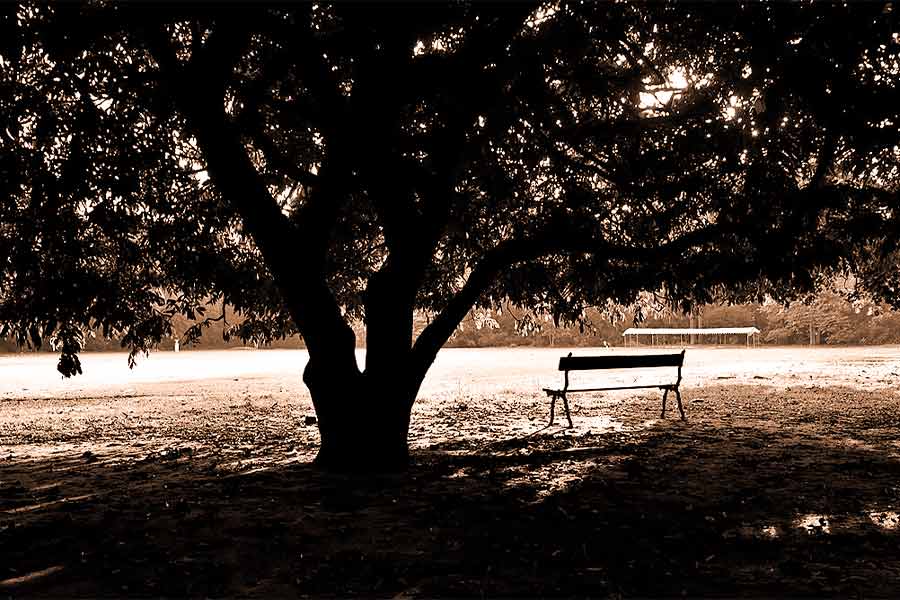
This history has dissipated. Carey’s vision has sepia-ed. The urgency has long been stilled Wikimedia Commons
I can visualise what the Agri-Horticultural Society must have been 150 years ago. A hub of traders, growers, researchers, babus and sahibs. Buggies bringing in imported seed sacks. Growers coming in from across the country seeking superior planting alternatives. Sahibs dictating copious longhand notes on plant attributes in thick ledgers. A trained librarian documenting findings. Chests of vegetables being transported to distant lands. The smell of tea. The air thick with garlic. Coolies carrying outward loads. Babus waiting outside for a sifaarish. The meeting room dissecting the latest report of how the imported cotton was faring in distant upcountry. Urgent letters from London. The general busy-ness.
I write with sadness now. This history has dissipated. Carey’s vision has sepia-ed. The urgency has long been stilled. The money going into serious agriculture research has declined. A thought-leading sub-continental institution has been reduced to a location where more people turn up to fulfil their mandatory ‘10,000 steps a day’ than in taking humankind ahead.
